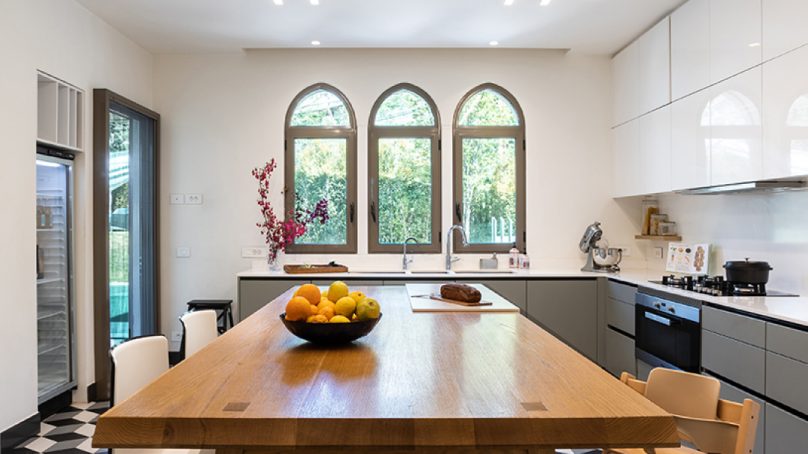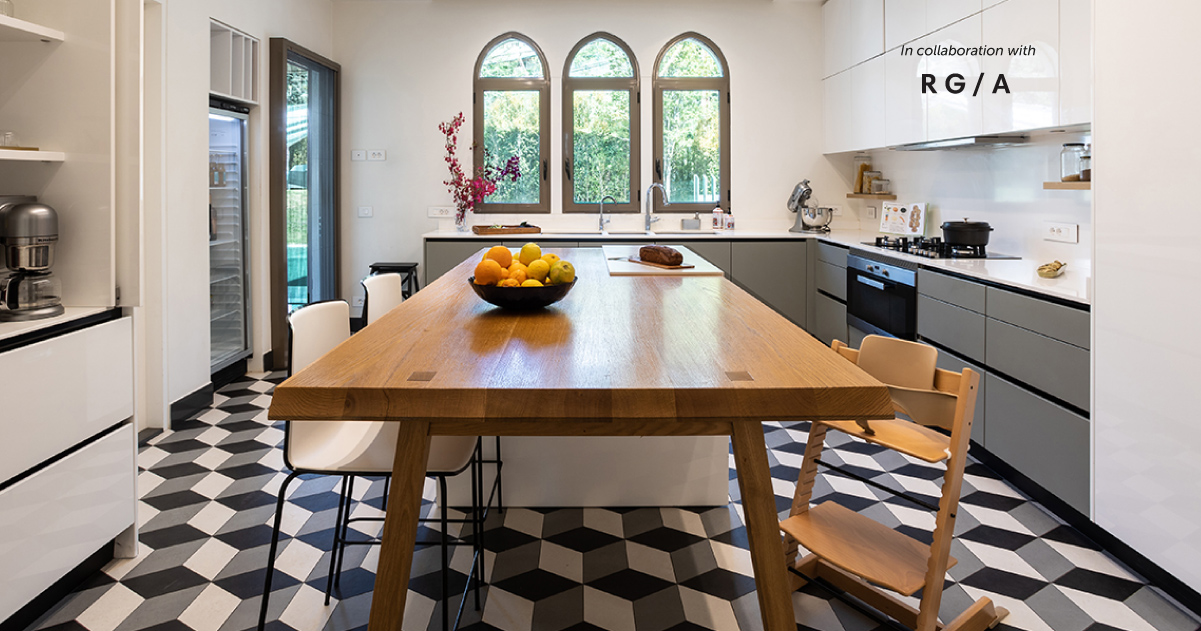

As the world continues to modernize, it is all too easy to overlook the timeless allure and significance of traditional design. However, there is a burgeoning movement in design and architecture in hospitality that seamlessly melds contemporary and traditional elements to create mesmerizing spaces that leave an indelible impression.
At Rabih Geha Architects, we translate this trend through the utilization of local craftsmanship and antique pieces, blending traditional and modern architectural elements, using natural materials and bespoke furniture, giving a contemporary twist to traditional components and integrating the outdoors.
The riveting juxtaposition of modern and traditional design is also apparent in our residential projects, whether in restoring historic mansions or creating modern homes that are imbued with the charm and elegance of traditional architecture.
Ultimately, lacing modern design with traditional living not only honors and celebrates cultural heritage, but also accommodates the needs and expectations of contemporary lifestyles.
Artisanship, artistry and antiques
Incorporating local craftsmanship and antique pieces is a highly rewarding strategy to achieve a perfect mix of modern design and traditional architecture.
For Nisrine restaurant, the chic Lebanese eatery in Qatar, we paid tribute to Lebanese artisanship and architecture by sourcing furniture, lighting, flooring and accessories from reputable Lebanese brands and manufacturers known for their traditional artistry and designs, such as Maison Tarazi and Nada Debs. This provided the space with an authentic appeal that accentuated the desired mood of warmth and nostalgia.
A parallel approach was taken with the restoration of M House, a 19th-century Lebanese mansion, where we meticulously preserved as much of the original aspect of the property as possible. To ensure
the continuity of its ancient aesthetic,
we sourced new tiles from 19th-century properties to replace those that were too damaged to salvage. These new tiles were then meticulously cleaned, polished and seamlessly integrated with the original flooring. This emphasis on traditional craftsmanship imbued the interiors with an unmistakably traditional atmosphere.
Antique furnishings, such as a stunning mother-of-pearl chest of drawers, tables, mirrors and grand crystal chandeliers from the client’s personal collection were carefully retained to add a sense of history and elegance to the overall design.
Old meets new
Preserving a two-century-old Lebanese property, while integrating modern amenities, was no easy feat, but the restoration of M House is a testament to how traditional architecture can be seamlessly melded with contemporary living. The aim of the four-year-long project was to modernize the property’s basic functions, while retaining its traditional character, and the result is a stunning blend of old and new.
We took great care to ensure that the mansion’s historical and cultural significance was safeguarded. This meant stripping bare all four façades of the property to remove any mechanical, electrical or structural fixtures that detracted from its original charm. The first and second floors were expanded to increase the living space and an elevator shaft was added, connecting the first to the first-floor mezzanine.
A decaying structure on the east side of the property was demolished to make way for a new multi-level car park and a fresh canopy connecting the residence to the new parking annex was added.
The white cantilevered steel beams of the new parking annex were designed to visually integrate with the main architecture, while remaining structurally independent from the residence’s façade.
The beauty of bespoke
Achieving a perfect union between traditional architecture and modern living requires a delicate balance which can be realized through the use of natural materials and bespoke furnishings.
Nisrine restaurant beautifully exemplifies this fusion with the careful curation of furniture and materials. Custom-made pieces that incorporate traditional motifs, patterns and colors, and natural materials, such as wood and marble, lend the space a distinctly traditional, Mediterranean atmosphere, accentuated by bespoke contemporary lights affixed to the vaulted ceilings.
Meanwhile, at M House, the use or reuse of natural materials was crucial to maintaining the authenticity of the 19th-century mansion. White Carrara marble in the guest bathroom and internal staircase, original stone molded architraves, hand-carved railings and sandstone walls are used throughout the property, while custom-made furniture like marble consoles and a modern dining table enhance the mansion’s lofty interior.
All about interpretation
The combination of traditional architecture with modern living can be further achieved by reimagining traditional elements.
For Nisrine restaurant, where we aimed to create a visual representation of nostalgia and family traditions, we incorporated towering, white-washed and arched ceilings typical of old Lebanese architecture.
C House, a three-story residence nestled in the mountains of Lebanon, similarly features a traditional façade with triple arcades, which inspired much of the interior design. To create a contemporary interpretation of these traditional elements, we paired the façade with modern interiors and a patchwork of elegant and contemporary furnishings.
A tubular ceiling, painted in black, and a hardwood runway were installed to further accentuate the contrast between old and new and to connect both ends of the reception area.
Bringing the outdoors indoors
The integration of the outdoors can be an effective way to marry traditional architecture with modern living. For example, with Nisrine restaurant, the aim was to capture the essence of family gatherings and childhood memories while providing a contemporary dining experience. To achieve this, we chose to feature the Nisrine wildflower, commonly found in the lush gardens of the Mediterranean, and transplanted it to Doha. To bring our vision to life, we turned to de Gournay, renowned for their hand-embroidered and hand-painted wallcoverings, who rendered the wild Nisrine flower atop a metallic red background, surrounded by olive and citrus trees, and the serin bird, using coats of pomegranate-colored pigment over silver-gilded paper.

founder of RG/Architects
















